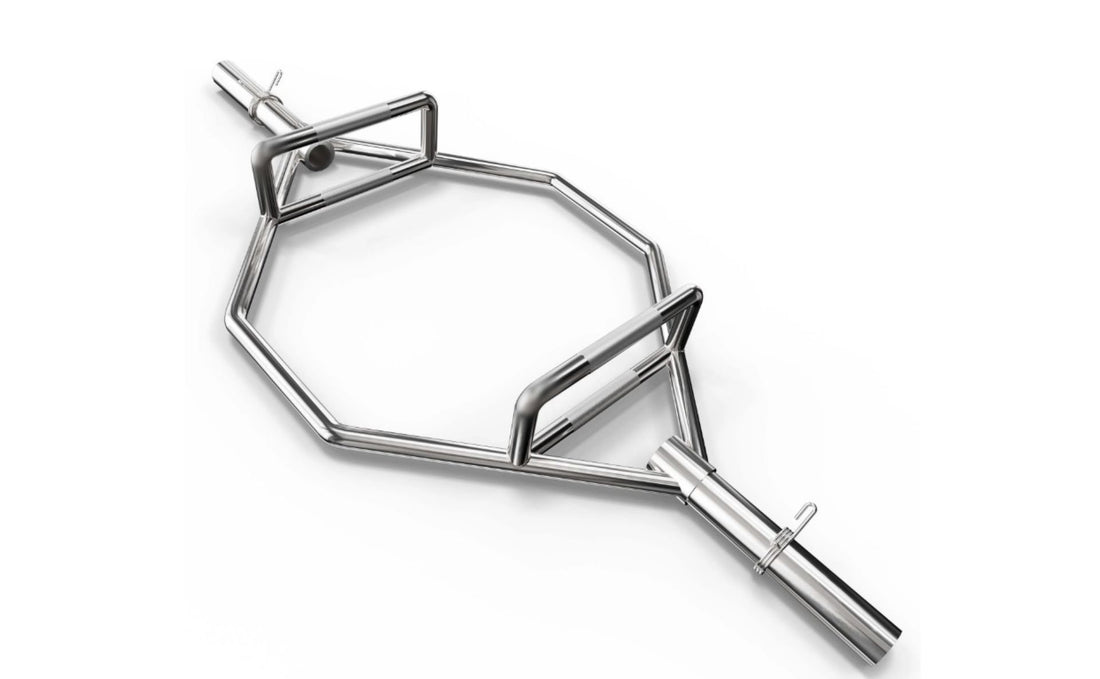
Ever walked into a gym and wondered, what is a trap bar? This unique piece of equipment, also known as a hex bar, has quickly become a favorite among fitness enthusiasts and professional athletes. Its distinctive shape and functional design make it a versatile tool that can deliver a wide array of benefits.
Understanding the Trap Bar
The trap bar is named for its shape. It is typically a hexagon or diamond-shaped barbell that allows you to stand in the middle of it. This design helps in maintaining a more natural and secure body position during exercises. Originating in the 1980s, this piece of equipment has evolved from a niche tool to mainstream popularity, integral to many strength and conditioning programs.
Key Features
1. Open Design: The trap bar's design allows for various body types and sizes to fit comfortably within it.
2. Handles: Most trap bars come with two sets of handles, one elevated and one at the bar's level, offering multiple exercise variations.
3. Load Distribution: The even distribution of weight around the body makes trap bar exercises safer and more efficient.
Why Use a Trap Bar?
One of the frequent questions is, why should I use a trap bar over a standard barbell? Here are some compelling reasons:
Reduced Spinal Load
When lifting with a trap bar, the load is centered around your body, minimizing the strain on your lower back. This is particularly beneficial for those with back issues or those looking to prevent back injuries.
Improved Safety
The trap bar's design significantly reduces the risks of incorrect form. The vertical handles place your arms in a more natural position, which helps in maintaining better posture during lifts.
Versatility
From college athletes to powerlifters, the trap bar can be used for various lifts such as deadlifts, shrugs, and even presses. This makes it an all-around useful tool for any fitness routine.
Popular Exercises with the Trap Bar
What is a trap bar used for? Here are some exercises to get you started:
Deadlifts
The most common use of a trap bar is for deadlifts. Position yourself in the middle of the bar, grip the handles and lift. The trap bar deadlift places less strain on the lower back compared to a traditional barbell deadlift.
Farmers Walk
Load up the trap bar with weights and walk a certain distance. This exercise is excellent for building grip strength and improving overall conditioning.
Shrugs
Stand in the middle and grip the handles. Shrug your shoulders upwards; this is an effective way to target the traps.
Presses
You can also use the trap bar for various pressing movements. Although less common, pressing with a trap bar can add variety to your training program.
Incorporating the Trap Bar into Your Routine
Now that you understand what is a trap bar, where do you go from here? Consider incorporating the trap bar into your regimen gradually. Here are some tips:
Start Slow
If you're new to the trap bar, begin with lighter weights to get accustomed to the different body mechanics required.
Consistency
Once comfortable, integrate trap bar exercises into your routine twice a week. Consistency will help you achieve the benefits over time.
Variety
Blend trap bar exercises with traditional barbell and free-weight workouts to keep your training diverse and to target various muscle groups effectively.
Final Thoughts
So, what is a trap bar and why should it be a staple in your workouts? Its unique design offers a safer, more ergonomic way to lift, making it a valuable addition for anyone serious about fitness. The versatility and benefits of integrating the trap bar into your fitness routine are unparalleled, helping you achieve better results while minimizing injury risks. It's time to elevate your training and unlock your full potential with the trap bar.
Ready to experience these benefits firsthand? Grab a trap bar and start reaping the rewards today!





















